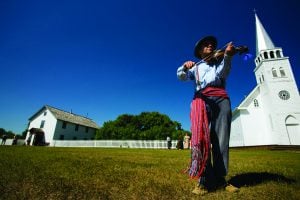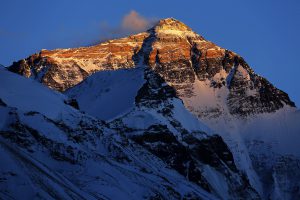
People & Culture
Kahkiihtwaam ee-pee-kiiweehtataahk: Bringing it back home again
The story of how a critically endangered Indigenous language can be saved
- 6310 words
- 26 minutes
This article is over 5 years old and may contain outdated information.
People & Culture


When Jean-Luc Pilon, curator of central archaeology at the Canadian Museum of History, was carrying out his doctoral research in the Fort Severn, Ont., area in the early 1980s, locals told him about shipwreck sites west of Fort Severn along the shores of Hudson Bay. At the time, he was focused on documenting the region’s ancient history, but this past August, he returned to the area with University of New Brunswick Master’s student Katherine Davidson and then-Fort Severn deputy-chief Chris Koostachin to view these remains, which are located about 60 kilometres east of the Manitoba border. The trio logged 192 kilometres and documented six marine-related sites.
Viewing Ontario’s coastal tundra and the endless expanse of the Hudson Bay shoreline with its myriad flocks of shore birds was, says Pilon, simply amazing. This incredible experience was punctuated by polar bear sightings — not one or two, but 37, including at least two mother and cub groups. On this return to Severn the team followed ancient raised beach ridges and had the season’s biggest and brightest full moon as its guiding beacon. Work continues on the identification of the beached wrecks.

In late October 2017, NASA Astronaut Randy Bresnik made a request from the International Space Station that people across the globe participate in an “Around the World In 90 Minutes” event. During one orbit of the ISS, he and other astronauts took a series of images of the world for future use, while hundreds of people shared images from their own locations via twitter, Instagram and Facebook using the hashtag #1world1orbit. RCGS Fellow Dave MacLean, of the Centre of Geographic Sciences in Lawrencetown, N.S., orchestrated a number of his GIS students to help map those images (using technology that they learn in class). The results are on this online interactive map. To help spread word about the mapping effort, the astronauts gave the project a shout-out from space.




Are you passionate about Canadian geography?
You can support Canadian Geographic in 3 ways:

People & Culture
The story of how a critically endangered Indigenous language can be saved

Exploration
A century after a Canadian was instrumental in charting the world's highest peak, a fellow Canadian reflects on the magnetism of Everest

People & Culture
Remembering Louie Kamookak, a new Explorer-in-Residence and other highlights from the 89th Annual College of Fellows Dinner

People & Culture
From a solo ski and mountain-climbing expedition to the South Pole to a project that mapped portions of Devon Island’s coasts for the first time, see what just a few of the RCGS’s Fellows have been working on in late 2018